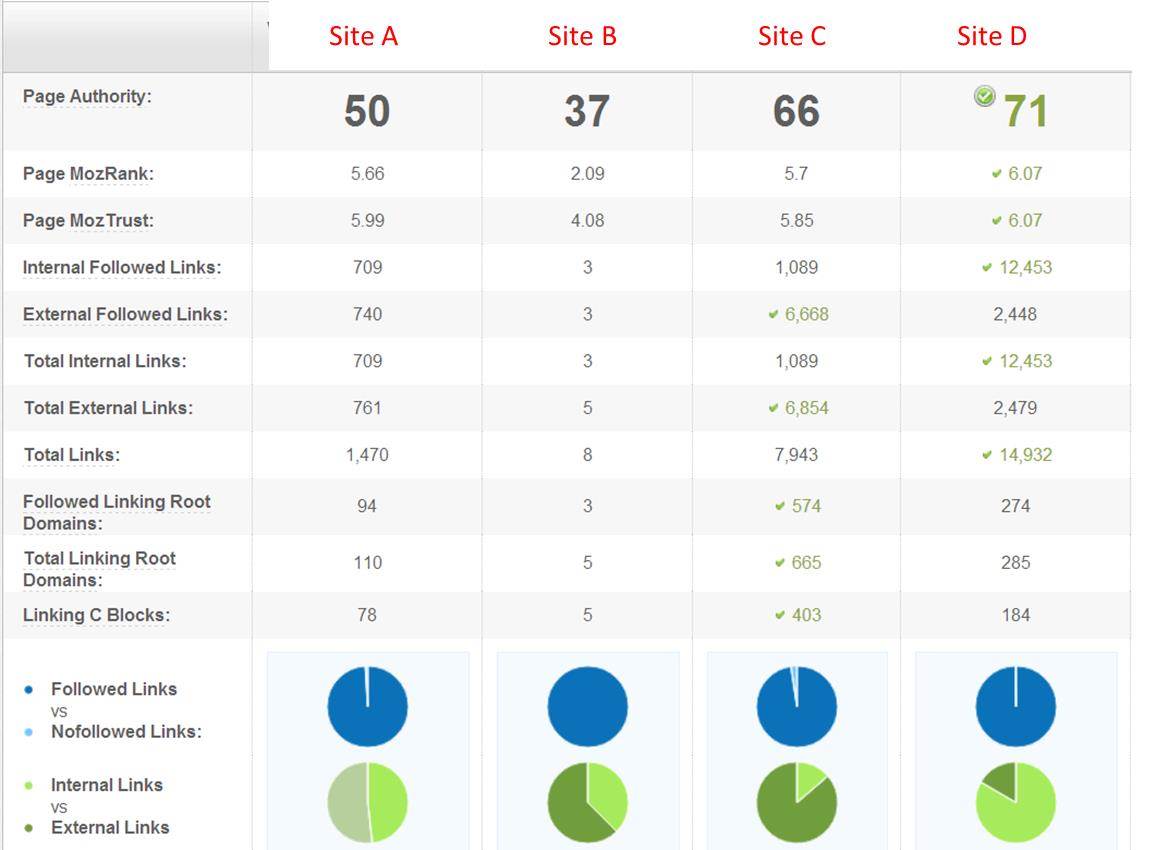The 20-20-60 SEO Rule

We just can’t explain this often enough: SEO does not stand still. The rules keep changing. The goal of Google, Bing and other search engines is to deliver users the most useful and relevant results; by doing this, they also deliver better value to advertisers.
Search algorithms have gotten smarter since the days when webmasters stuffed keywords to game the system. The system is way more sophisticated now. Since its Panda release in 2011, Google has been penalizing duplicate content. A couple of months ago, in May 2013, Google updated to Penguin 2.0, which targets “thin content” sites – sites that exist mainly for the purposes of hosting backlinks for SEO.
So this is a great time to talk about the 20-20-60 Rule for SEO. Think of SEO in terms of factors that account for SEO success (also read: 4 Ways to Leverage Google Analytics to Improve SEO):
- 20% depends on technical structure:
With a professionally-built site, your web developer should have designed a site that’s search-friendly by taking care of: page structure, redirects, the robot.txt file, internal links, and other details. That leaves you with the responsibility of providing unique content
- 20% depends on on-page factors:
This means the quality content marketing, use of indexable text, images, and video (no Flash please), well-considered meta tags and meta descriptions that follow best practices, images labeled with alt text
- 60% depends on off-site factors:
This means links from meaningful external sites such as social media, appropriate directories, business partners, customers, industry forums, or other bloggers.
Pay attention to all these areas and you will have a diversified set of SEO practices. You’ll never depend on any one tactic, which makes you less vulnerable to search engine changes.
Okay – now how can you implement the 20-20-60 SEO Rule?
-
Technical structure
If you’re not sure whether your website is SEO-friendly, get an SEO Audit. Most digital agencies provide such a service and you’ll get a report and recommendations. The good news is that if your site was built professionally and within the last few years, SEO will have been part of the design agency’s mandate. If you’re building a new website, remember that Google now rewards mobile-friendly websites, so make that a requirement. Get a well-structured site and your biggest responsibility will be to provide quality content for that site.
-
On-page factors
You want to create content that search engines can index to come up with the best keywords for your target audience’s search criteria. Assuming you’ve done your keyword research, this becomes a matter of internal discipline. When you blog, make sure you assign meta tags. When you write content, include keywords in the text so that search engines can index properly. When you use images, be sure to provide alt text descriptions. Provide fresh content regularly.
-
Off-site factors
If there is a silver bullet, backlinks are the best candidate. If you have a multitude of links from other sites that have accumulated over time, you’ve achieved organic SEO success and no one can take that away from you. To see how you’re doing for backlinks, use a free tool such as Open Site Explorer. You can compare your site against competitor sites or sites of similar nature. (Read 5 SEO Tools Every Digital Marketer Must Know for more SEO tools.)

But ‘lots of backlinks’ is just a metric. The challenge is: how do you drive up this metric? How can you convince others to link back to your site?
- Reach out to partners, suppliers, customers:
This is the low-hanging fruit. If you haven’t already, see whether your business contacts are willing to cross-link to your pages. If you have an appropriate reason, this is usually an easy discussion.
- News releases:
Whenever you write a press release, use an online PR distribution service such as PRWeb. This legitimately submits your press release to relevant sites such as trade publications and news outlets (you get to choose by industry, geography and other parameters). You're allowed a URL or two, this means backlinks from wherever the press release gets published.
- Video tags:
If you have videos (demos, talks, how-to instructions), tag them with proper keywords.
- Get on someone else’s blog:
Almost all online editors and analysts keep a blog. Interact. Comment. Reply. Reach out to the blogger and offer to write something. Many blogs will allow you to add your website URL to your comment. Another legit backlink.
- Social media:
Google+, Facebook likes, retweets. If you post a good case study and your social network shares, that link lives out there on the social media site forever.
- Quality, fresh content:
What would motivate another blogger to let you write something? What would motivate one of your Twitter followers to retweet your case study? Quality content, fresh content. We write a lot about content marketing but only because content has become so important – not just for SEO but to your social media success and online presence overall.
Finally, it takes resources to create content on a regular basis, manage social media, and reach out to industry pundits. You also need to monitor traffic and do your analytics to see which pages of content grab high engagement rates and which ones are duds; then figure out how to make improvements. It’s an ongoing, incremental improvement effort.
Organic SEO success takes time. And it’s not free. The 20-20-60 Rule is something you need to work on every day, every week in the background, regardless of how many paid search marketing campaigns you run. (If you're running paid search marketing campaigns, you might find the article, How to Create Display Advertising that Sells, useful.)
If you want to learn SEO or other digital marketing programs in-depth, attend the P.A.C.E. Digital Marketing Training Workshop.


